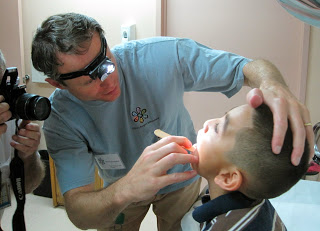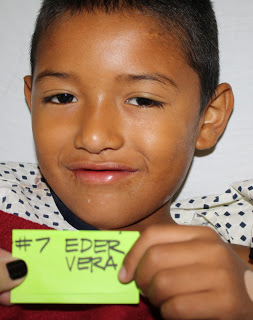
Haiti 2011 – Surgery: Day 2
It’s almost 10 p.m. and we have been doing surgery for over 12 hours now. The closure of this final case will mean the successful completion of 11 surgeries, anatomical remedies for 11 children, and relief for 11 families. Our work will never be done in Haiti, but the individual lives of the children we help on this mission should not be overlooked in light of the overwhelming need.
Dr. Eric Moore arrived today, so tomorrow we start the cleft cases. He will do all 6 in the morning and then Dr. Trish will finish up the day with 4 more hernia cases. All patients from yesterday were discharged before noon with no complications, and instructions to follow-up with the hospital in a week. We were able to get an earlier start and worked hard to keep the schedule moving. In addition to the 11 surgeries done today, we also screened 6 more patients, and are expecting more tomorrow as well. As of now, our goal is to fill the schedule through 3 cases on Saturday.
In truth, Wednesday’s success was brought to you in big part by our float nurse, Norie Wilson. Norie deserves to be highlighted today for her coordination, level-headedness in the face of potential chaos, and ability to keep everyone moving. Between keeping track of patient discharges, new patient admits, the surgery schedule, where each patient needs to be when, who is where when (patients AND team members), and what who is doing what where when, monitoring patient screening, and dealing with the random “situations” that arise, Norie’s coordination is essential to a successful mission. We are all so grateful for her “be calm and carry on” attitude as well as her universal understanding of how missions work and her ability to make it look effortless (she really embodies the essence of a “float” nurse). Although, don’t be fooled; Norie is working really, really hard.
Today was a testament to the fact that, while we may have fun on the missions (and in our blog), our ultimate goal is to make a difference in the lives of our patients and their families. Although they are often the most simple to fix, cleft cases are also the most heart wrenching. We were reminded of this in a big way when one family relayed how important it was their child receive surgery, as they had been all but driven out of their village due to the stigma associated with their child’s cleft lip. One of our patients is a teenage boy who was abandoned because of his appearance. It’s stories like these which keep us coming back, because we know how dramatically a simple fix can alter a child’s life.





